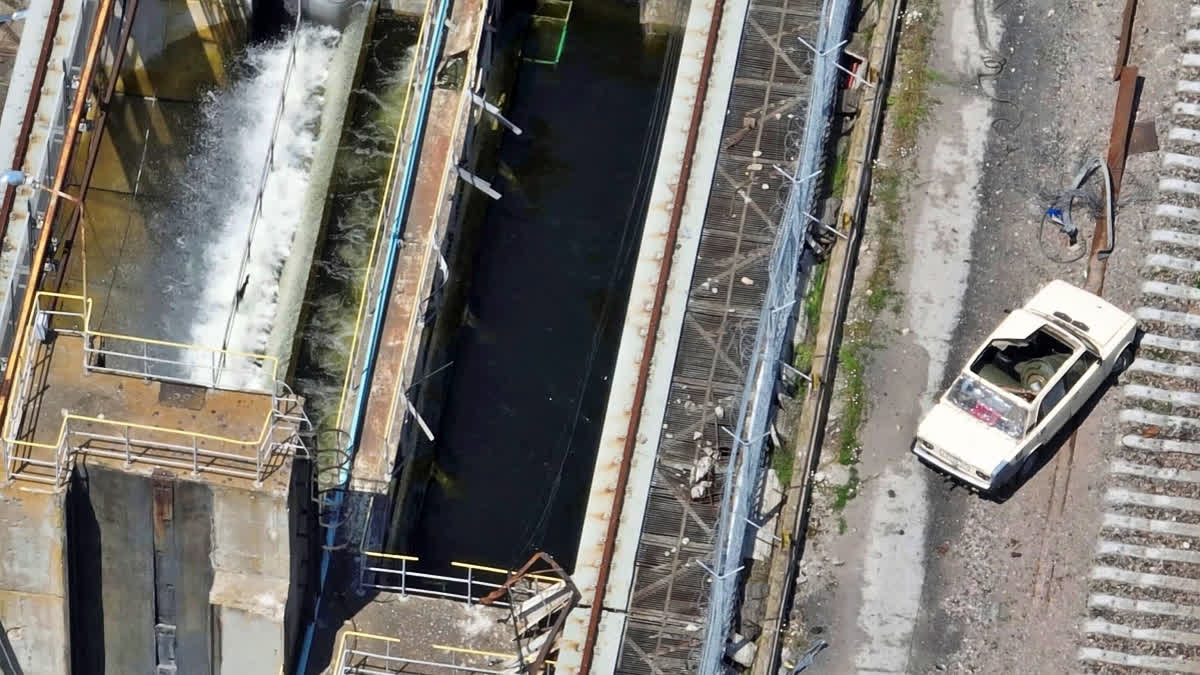Berislav (Ukraine): Russia had the means, motive and opportunity to bring down a Ukrainian dam that collapsed earlier this month while under Russian control, according to exclusive drone photos and information obtained by The Associated Press.
Images taken from above the Kakhovka Dam and shared with the AP appear to show an explosive-laden car atop the structure, and two officials said Russian troops were stationed in a crucial area inside the dam where the Ukrainians say the explosion that destroyed it was centred. The Russian Defense Ministry did not immediately respond to a request for comment.
The dam's destruction led to deadly flooding, endangered crops in the world's breadbasket, threatened drinking water supplies for thousands and unleashed an environmental catastrophe. Ukrainian commanders say it also scuppered some of their plans to take Russian positions in a counteroffensive that is now in its early stages.
Each side has accused the other of destroying the dam, but the various Russian allegations — that it was hit by a missile or taken down by explosives — fail to account for a blast so strong that it registered on seismic monitors in the region. Russia has benefited from the timing of the massive flooding that followed the explosion — though areas it occupies also experienced a deluge and the consequences may have been more extensive than expected.
In the region around the dam, the Dnieper River forms the front line between Russian and Ukrainian forces, with Russian ones in control of the dam itself.
Two Ukrainian commanders who had been in the area but at different locations told the AP that the rising waters quickly swamped their positions and Russian ones and destroyed equipment, forcing them to start all over again with their planning and leaving them facing a much larger distance to cover, all in mud. One spoke on condition of anonymity in order to reveal more frankly the extent of the problems caused by the rising waters.
"It's a regular practice, to mine (places) before a retreat," said the other, Illia Zelinskyi, commander of Bugskiy Gard. "In this context, their actions were to disrupt some of our supply chains as well as complicate a crossing of the Dnieper for us." In recent weeks, Ukraine's armed forces have reported limited gains in the beginnings of a counteroffensive to take back territory seized by the Russians since their invasion in February 2022.
Russian President Vladimir Putin himself indirectly acknowledged the advantage to his forces last week, although he maintained Russia's denials of responsibility: "This may sound weird, but nonetheless. Unfortunately, this disrupted their counteroffensive in that area." Speaking before a meeting of military correspondents, he explained his use of the word "unfortunately" with bravado: "It would have been better if they had attacked there," he said. "Better for us, because it would have ended very badly for them, attacking there."
Kakhovka is one of a series of Soviet-era dams along the Dnieper River that were built to withstand enormous force, amounting to thousands of pounds of explosives. They were constructed in the wake of the infamous World War II "Dambusters" raids that destroyed German dams. Taking out the Möhne dam in 1943, for instance, required five 4.5-ton, specially made "bouncing bombs," according to the Imperial War Museum archives.
Ukraine is not believed to possess any single missile with that kind of power. Sidharth Kaushal, a researcher with the London-based Royal United Services Institute, said the Ukrainians are not believed to have any missiles with a payload greater than about 1,100 pounds (500 kilograms).
